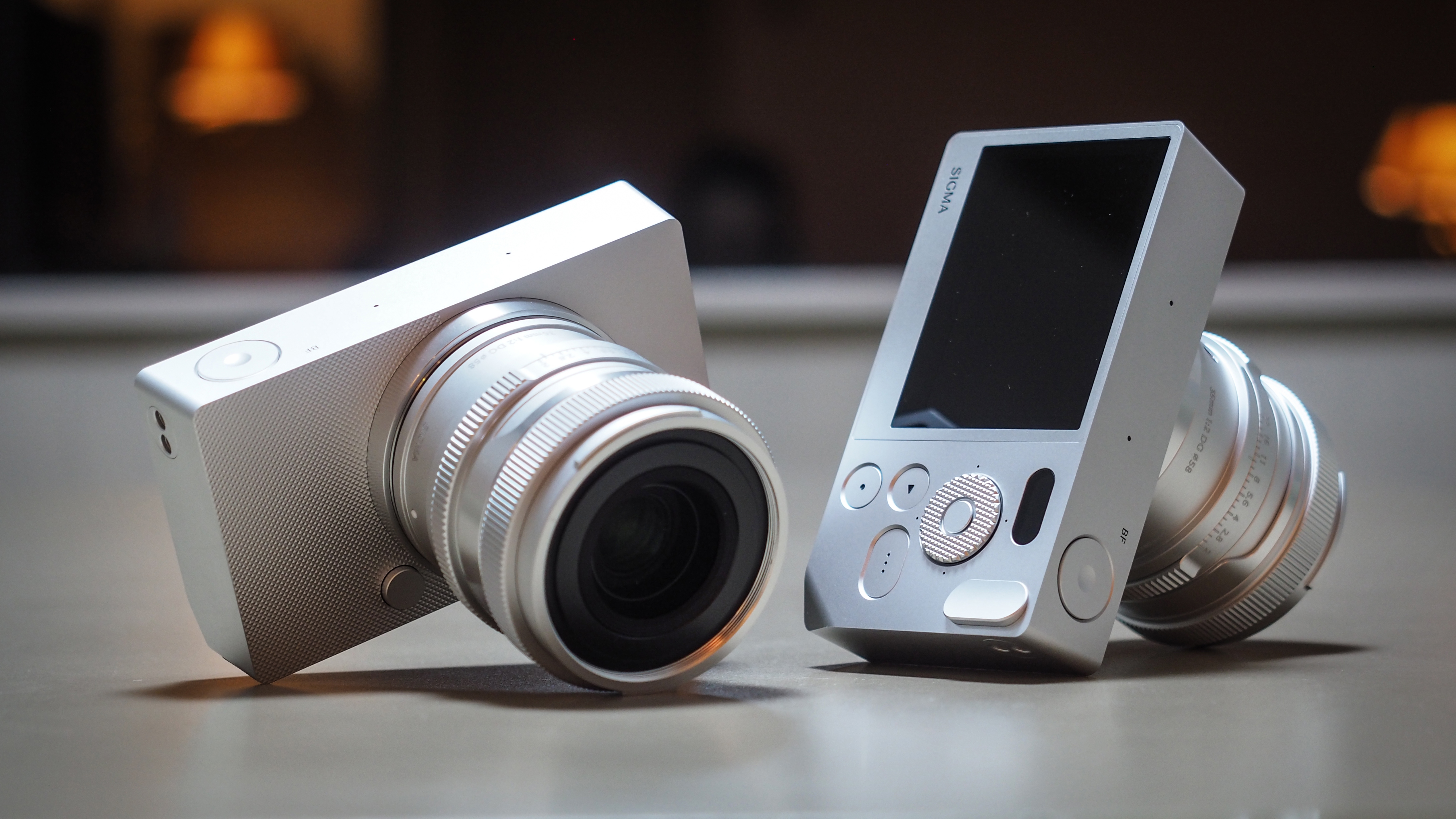The best professional camera in 2025: which pro camera system is best?
These are the best professional cameras, based on my testing them in professional environments (and on professional shoots)
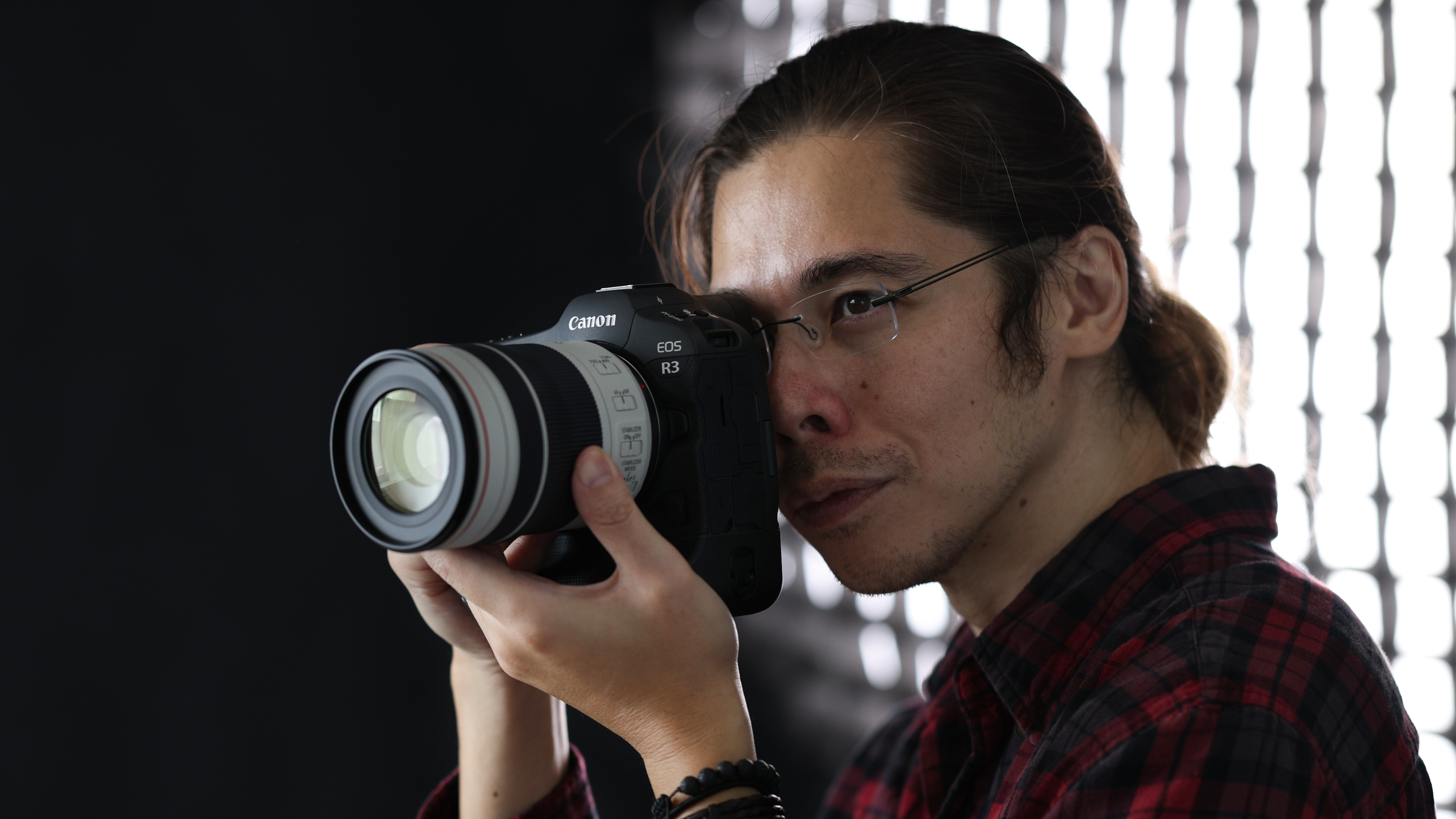
I've been testing the best professional cameras for years – both as a reviewer and a pro photographer. And no matter what your profession, one thing you need from any camera is speed. Whether I'm taking portraits for a client or I'm commissioned to cover a sporting event, I need to know that my camera is quick to turn on, fast to focus, and responsive enough to keep up with the ebbs and flows of the job.
There are obviously other factors, from weather sealing and lens selection to battery life and buffer size. I've been shooting professionally for over a decade, and over the past 6 years I've taken well over 200,000 photographs while testing the best professional cameras for this website.
Having tested and compared these cameras in real-world situations, shooting everything from Olympic teams to amateur athletes, the best professional camera all-round is the Canon EOS R5 Mark II. It has 30fps burst shooting and phenomenal AF to photograph fast action; 45MP resolution (upscalable in-camera to 180MP) for high-end fashion, beauty and product work; 8K 60p / 4K 120p video to cover hi-res video; and heavy-duty weather sealing and robust build quality to withstand extended all-purpose use.
However, while this camera meets the needs of every profession, not every profession needs this camera! I recommend the Panasonic S5 IIX for pure video work, for example. And if you're on a budget or just starting out as a pro, I would suggest the Canon EOS R6 Mark II as a similar do-everything device at a much more reasonable price. So here, then, are the best professional cameras you can buy right now that I personally recommend.

I started my professional career in 2014, shooting for clients such as Olympus (OM System), Elinchrom, L'Oréal and Aston Martin Racing, in addition to musical artists and private commissions. I'm lucky enough to have used every pro camera released since 2018, so I have a good feel for the tools of the trade!
Top Picks: Best professional camera
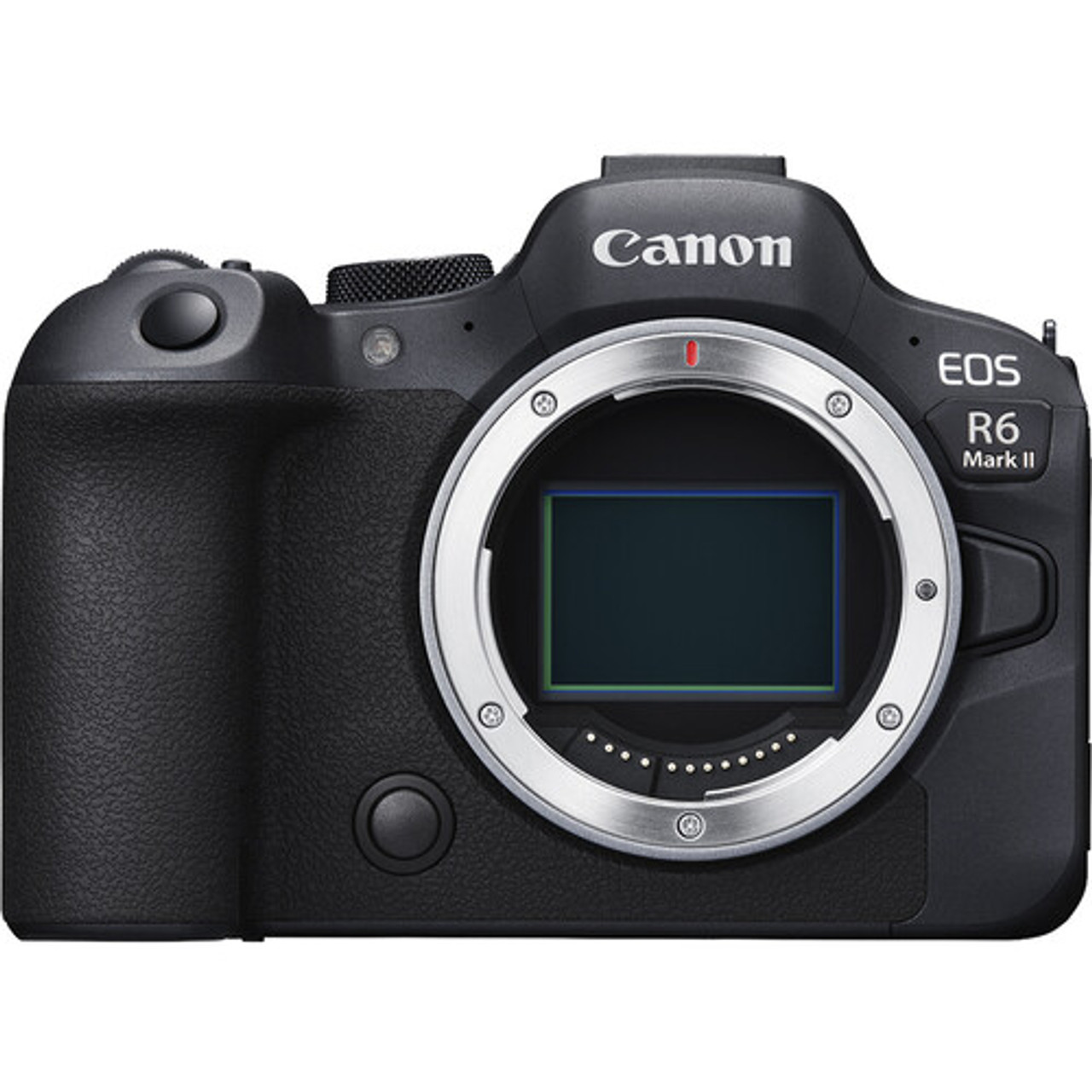
Turning pro? Need an easy-to-use camera that packs great stills, video, burst speed, stabilization, dual card slots and weather sealing – all without breaking the bank? I recommend Canon's latest 6-series camera to start your professional journey.
Read more below...
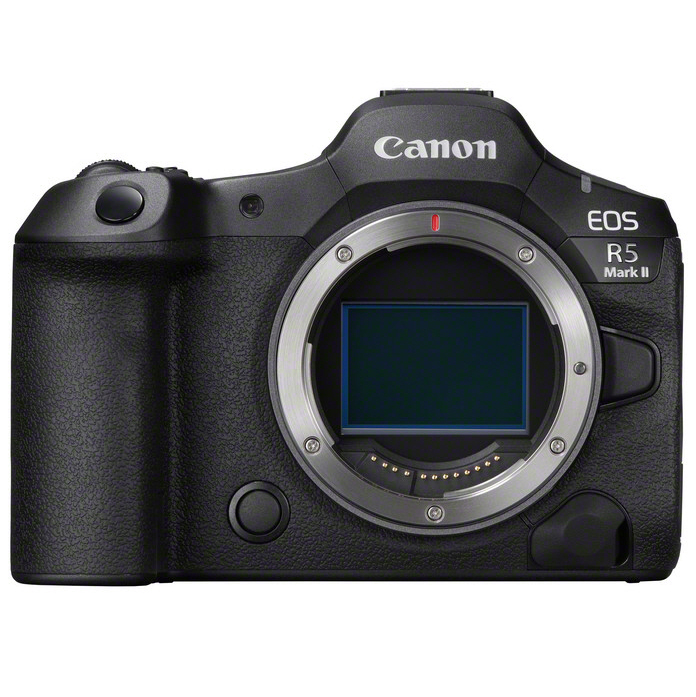
There's no job the R5 Mark II can't handle, with 45MP stills (and in-camera 180MP upscaling), 8K 60p RAW video, up to 8.5 stops of stabilization, 40fps burst shooting, AI-trained autofocus, and a viewfinder that enables you to change focus with your eye!
Read more below...

If you swear by DSLRs, I don't think there's a better pro tool than the D850. It's definitely a stills-first camera, with a 45.7MP sensor and a top burst speed of 9fps (with the grip), but still delivers serviceable 4K 30p video. But if you need video…
Read more below...

Panasonic is regarded as the best in the business for video, and the S5 IIX takes that to the next level. Up to 6K resolution, open gate capture, SSD recording, ProRes RAW and B-RAW, and great image stabilization.
Read more below...
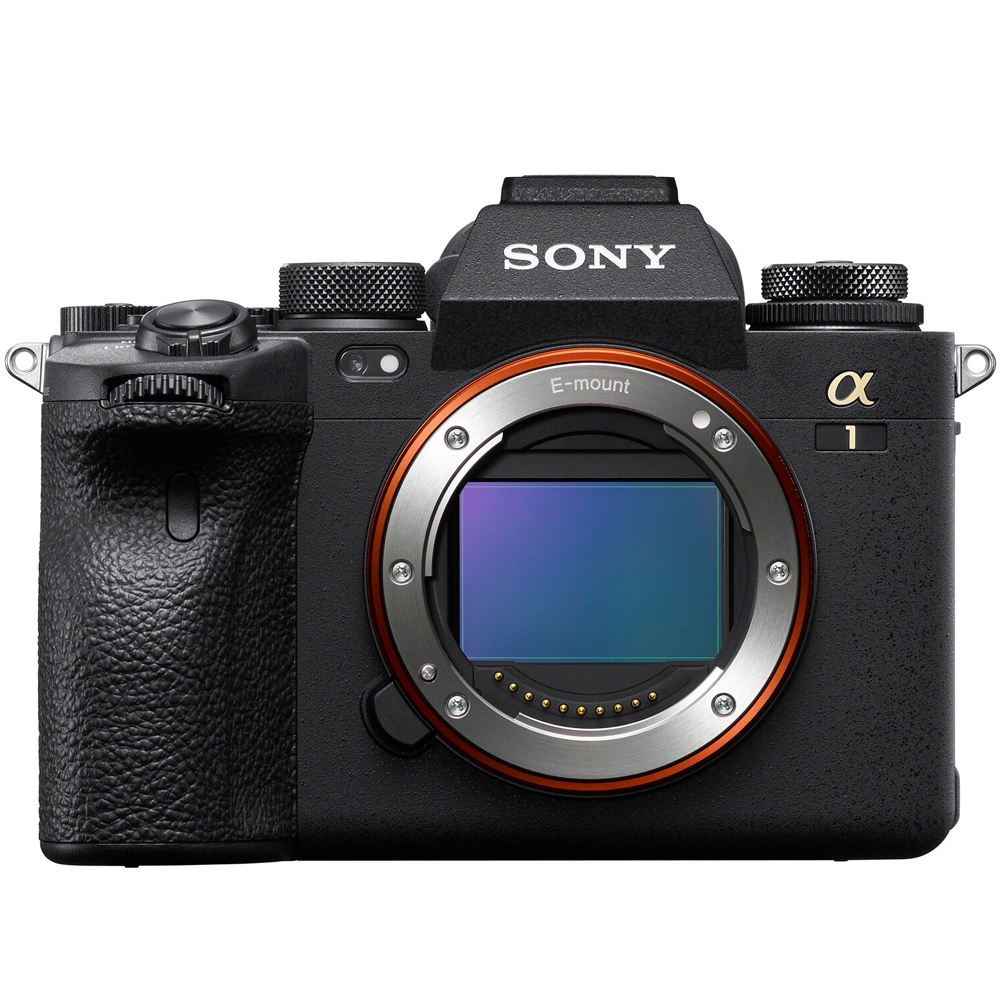
Sony's flagship series, the original A1 is an all-purpose pro camera with amazing 50.1MP stills (and a 199MP high-res mode), a top speed of 30fps burst shooting, 8K 30p video, and the richest ecosystem of full-frame mirrorless lenses.
Read more below...
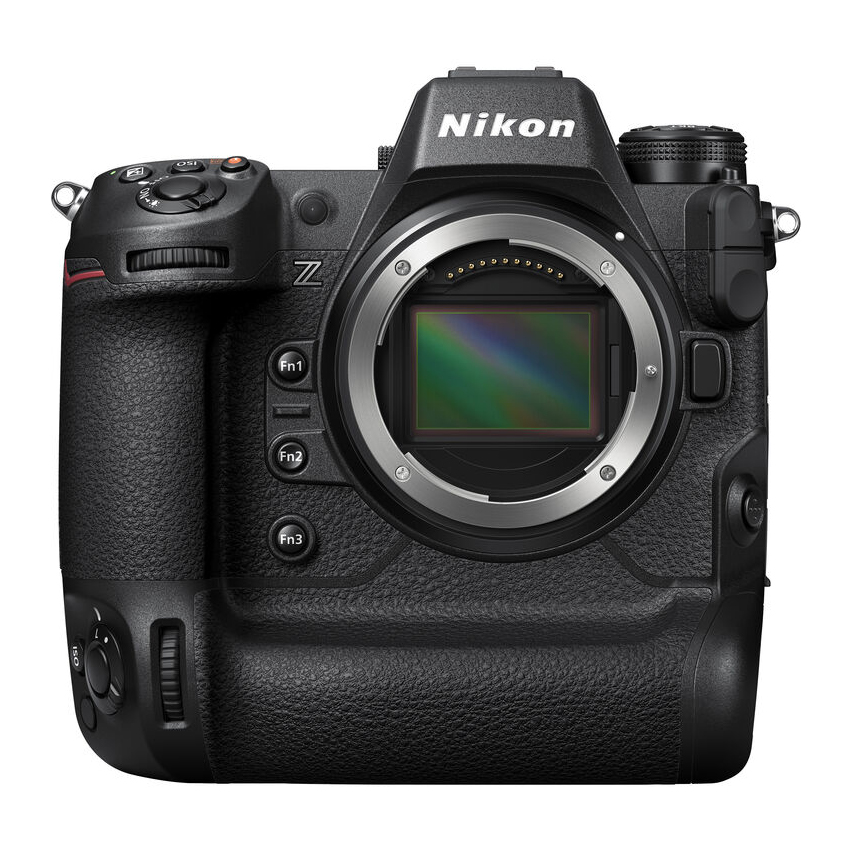
Arguably the best camera that Nikon has ever made, this 45.7MP camera is the only one here that offers 8K 30p video – and I love that it features an integrated vertical grip for seamless orientation-switching, and an extra-long life battery.
Read more below...
Best professional camera
Why you can trust Digital Camera World
Best camera for professional photography beginners
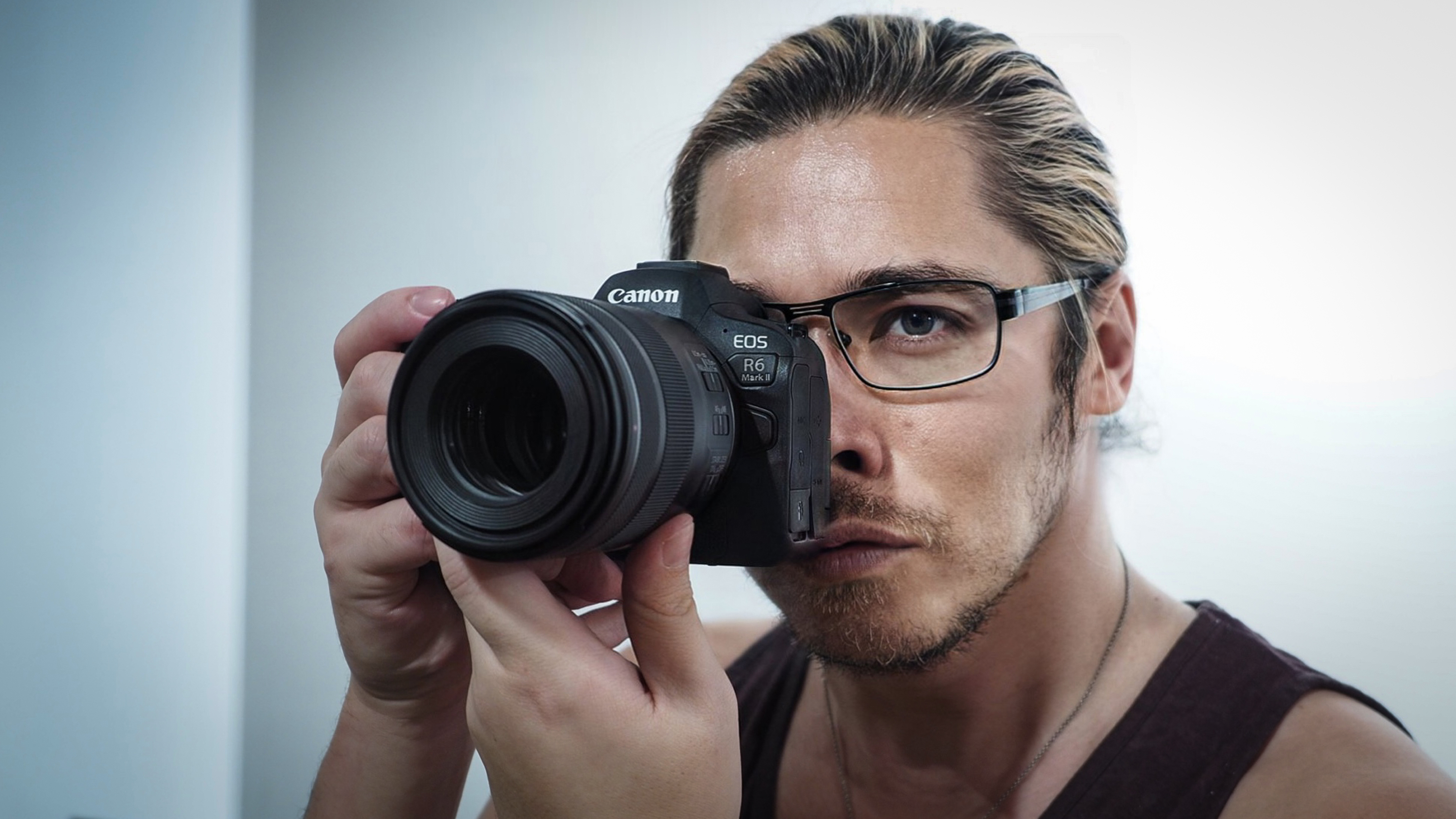
Specifications
Reasons to buy
Reasons to avoid
✅ You need bang for buck: Pro cameras cost a lot, but the R6 Mark II gives you a great deal of power for the price.
✅ You shoot stills and video: This is a great hybrid camera, delivering fantastic 4K video quality on top of photographs.
❌ You need resolution: This doesn't have as many pixels as its rivals, affecting printing and composition accordingly.
❌ You want lens options: Canon does not allow third parties to produce autofocus lenses, limiting your choice.
🔎 Canon EOS R6 Mark II Not designed to be a pro camera, it nonetheless has everything you could need to start shooting professional stills and video. ★★★★½
If you've just turned pro, or are just about to, I think the R6 Mark II is a fantastic place to begin. I believe that Canon's R system is the best platform (and the one I have personally invested in), but its top-tier cameras are very expensive.
The R6 Mark II enables you to get started in the R system with a great jack-of-all-trades camera, and begin building your arsenal of Canon RF lenses – then, when you have the need or the finances, you can upgrade to a camera with more firepower that serves your specific needs.
However, such are the R6 Mark II's specs, you may never need to! The 24.2MP resolution is more than enough for most needs (I've shot plenty of two-page magazine spreads, for instance), and the blistering 40fps burst shooting outclasses some of the best cameras for wildlife photography!
The 4K HQ video is oversampled from 6K for glorious crispness, and the phenomenal Dual Pixel CMOS AF is ungodly accurate – as powerful as it is for stills shooting, it locks onto your subject and holds focus like you've got a dedicated focus puller. Throw in the incredible in-body stabilization (up to 8 stops) and you get phenomenal performance for the price.
The only asterisks are that the camera still uses SD cards (though this may be a plus, given that they're cheaper than CFexpress – but they're slower and less reliable) and there are no options for third-party autofocus lenses.
Read my full Canon EOS R6 Mark II review
| Lab results | Score | Rating |
|---|---|---|
| Resolution (ISO 200) | 28/60 | ★★★ |
| Dynamic range (ISO 200) | 11.71 EV | ★★★★ |
| Noise (ISO 200) | 40.23 decibels | ★★★★ |
Best Canon camera for professional photography
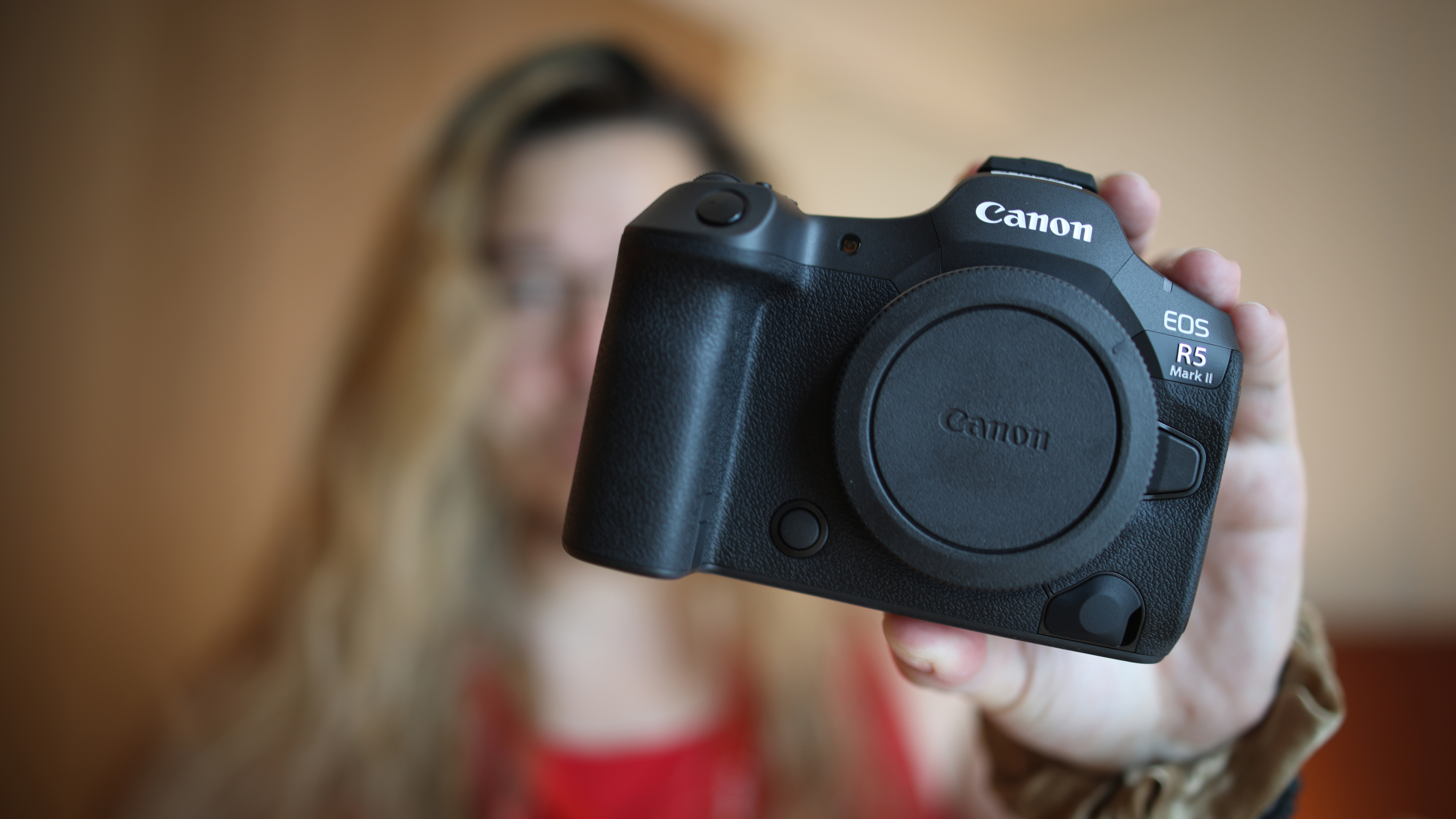
Specifications
Reasons to buy
Reasons to avoid
✅ You want fantastic AF: This is the best autofocus system I've ever used, hands-down, for any subject.
✅ You need resolution: Its high-res 45MP sensor can shoot up to 180MP stills, as well as capture 8K 60p video.
❌ You shoot extended video: You need an external cooling grip to shoot 4K HQ and 8K for long periods.
❌ You want lens options: There are currently no full-frame autofocus lenses from third-party manufacturers.
🔎 Canon EOS R5 Mark II This camera has everything from resolution to stabilization to weather sealing to video – and its autofocus blows everything else away. ★★★★½
I was so impressed by the original EOS R5 that I bought one with my own money – and the Mark II is so good that I may have to do the same again!
If I didn't need the resolution, then the Canon EOS R1 would be my top choice as it takes the edge in autofocus performance. However, the R5 Mark II's native 45MP resolution is good enough for any job – and should I need more, I can upscale images to 180MP in-camera without any loss of quality, thanks to Canon's amazing Neural network Image Processing.
This camera is about more than just resolution, though. If you want the best autofocus in the business, the new Dual Pixel Intelligent AF is Canon's flagship-level technology – and it's quite simply the finest I've ever used.
Not only is it accurate, but when you turn on Action Priority AF for specific sports (currently basketball, soccer and volleyball) the camera also uses AI algorithms to predict and track the key players as if by magic.
It can also blast out bursts at up to 40fps, but you can customize the frame rate to whatever works best for you – whether that's 15fps, 7fps, 3fps… there's no need to capture a million shots every time if you don't want or need to.
The Mark II continues the original R5's legacy of 8K video, but takes this to the next level with 8K 60p RAW capability. The footage is incredible, and the uncanny AF makes solo shooting a dream, but you'll need the optional cooling grip in order to shoot substantial files.
Speaking of video, the camera has a useful trick for pros: the ability to shoot photos and video simultaneously. There are some restrictions, such as being limited to FullHD, but for newsgatherers or anyone wanting to verify the legitimacy of their work, this could be an important tool.
Then there's the phenomenal in-body image stabilization (good for up to 8.5 stops), the robust weather sealing, the Eye Control AF… I don't think there's any debate that this is the best camera Canon has ever made.
Read my Canon EOS R5 Mark II review (Lab test results coming soon)
Best DSLR camera for professional photography
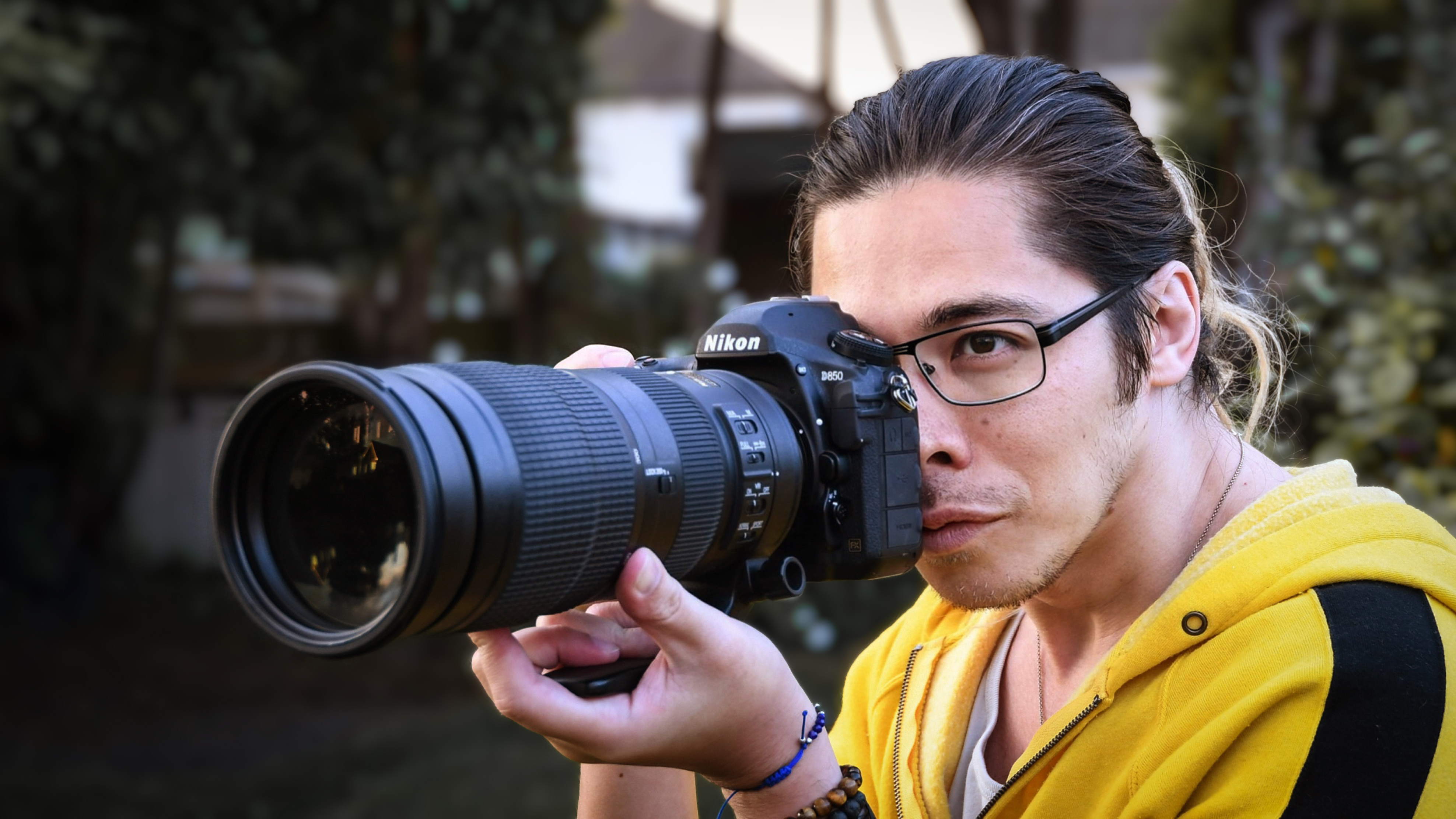
Specifications
Reasons to buy
Reasons to avoid
✅ You want a DSLR: This is a more versatile option and a better buy than the Nikon D6 or Canon EOS-1 DX III.
✅ You want megapixels: At 45.7MP, this is still one of the most high-res cameras despite the mirrorless revolution!
❌ You need top speed: The D850 maxes out at 9fps – but only if you buy the additional grip, otherwise it's 7fps.
❌ You want mod cons: This things like subject detection AF and image stabilization, so you have to work much harder.
🔎 Nikon D850 If you want to go the DSLR route, there's no better option for all-purpose pro use – and no better selection of affordable native lenses, either. ★★★★★
While I can think of better DSLRs for specific purposes (the Canon EOS-1D X Mark III is superior for pure sports, for example), there's no better all-purpose DSLR than the mighty Nikon D850.
A resolution beast, offering 45.7MP stills, it's still relatively fast for a DSLR with a continuous shooting speed of 7fps (or 9fps if you purchase the optional battery grip), meaning this still a capable performer for fast action like wildlife.
The autofocus system is primitive, compared to the AI-informed AF of its mirrorless rivals (that feature cutting-edge subject detection and tracking), but what it lacks in intelligence it makes up for in robustness. The D850 may not automatically recognize every species of wildlife, but I know I can trust it once I tell it where to focus.
While mirrorless cameras are technologically more advanced, there are advantages to DSLRs – the big one, for me, being the much better battery life. I've never had this camera run out of juice during a shoot!
It may be bigger and bulkier, but it's also more rugged and robust than mirrorless bodies – and being chunkier means that it balances better with big pro lenses, too.
Perhaps the biggest plus is that Nikon's F mount is fully matured, meaning that every lens you could ever need already exists – and is going to be available cheaper than the mirrorless equivalent, especially on the second-hand market.
Read our full Nikon D850 review
| Lab results | Score | Rating |
|---|---|---|
| Resolution (ISO 200) | 42/60 | ★★★★★ |
| Dynamic range (ISO 200) | 12.22 EV | ★★★★★ |
| Noise (ISO 200) | 38.38 decibels | ★★★★ |
Best camera for professional videography
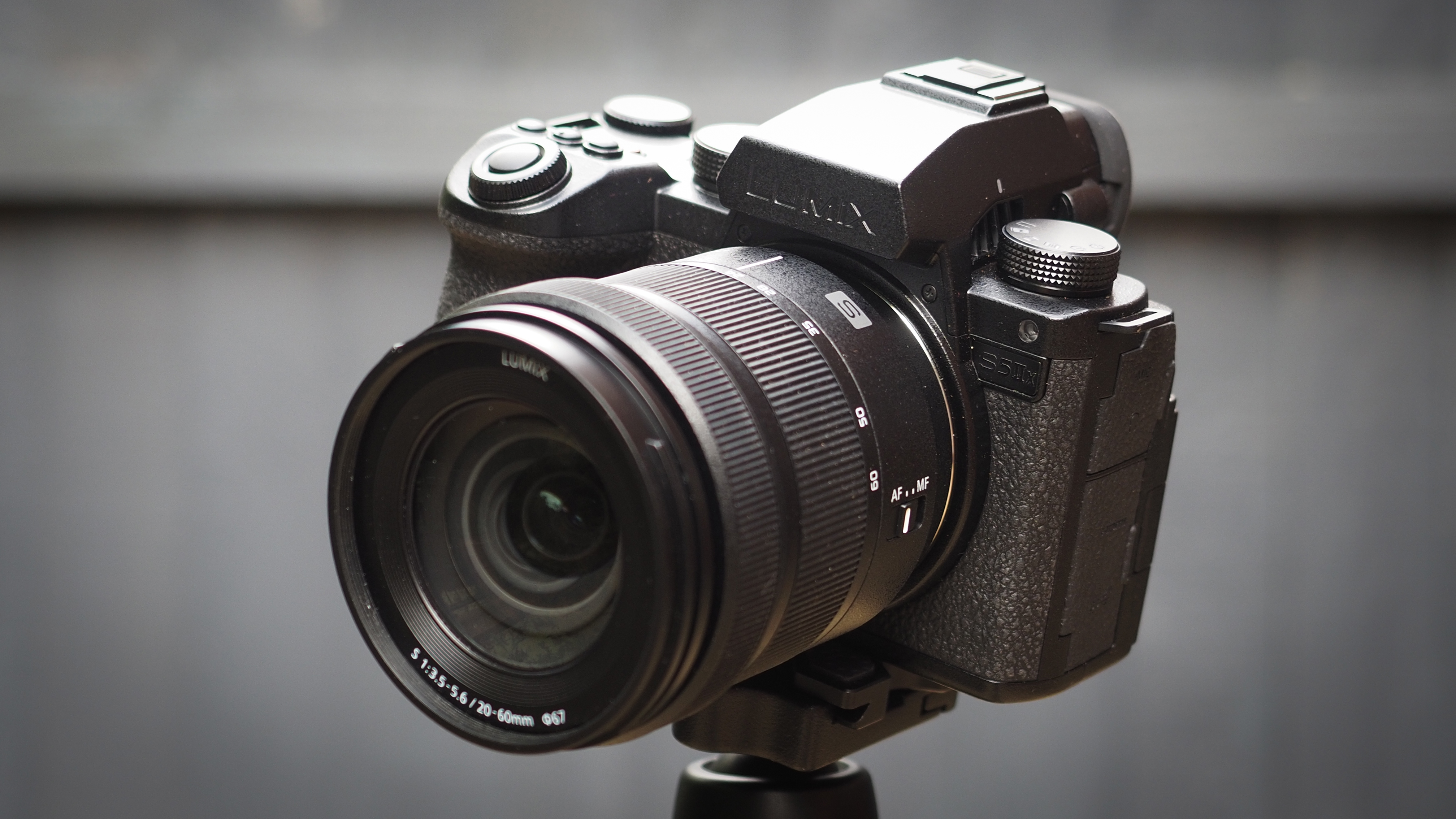
Specifications
Reasons to buy
Reasons to avoid
✅ You shoot video: It's simple: if you're a videographer or video-first shooter, there's no better option than the S5 IIX.
✅ You need versatile video: With open gate recording, and every conceivable codec, this is a BFF for your workflow.
❌ You need 8K: Truthfully, very few people need 8K right now – but if you're someone that does, look elsewhere.
❌ You need resolution: The S5 IIX is a capable stills camera, but its 24.2MP sensor isn't the most pixel-rich.
🔎 Panasonic Lumix S5 IIX The undisputed king of video, short of a cinema camera there's nothing better for pro filming (unless you really need 8K!). ★★★★★
Just about any modern camera can handle a bit of video these days – and in fact, your camera phone is probably the best device for spontaneous day-to-day capture. However, if I need professional-quality video capture, the Panasonic Lumix S5 IIX is the best camera for the job.
The fact that it offers open gate recording makes it incredibly versatile, giving you the ability to output in any number of aspect ratios as the brief dictates. Panasonic has also made an interesting choice in not getting behind 8K in the same way that its rivals have, and I can see the thinking here as 6K really is the sweet spot.
Whether you're oversampling your 4K, or shooting with the extra resolution in order to crop in to create different compositions or digital camera moves, 6K gives you the extra pixels without the extra processing (and storage) headaches of 8K.
The S5 IIX is also unsurpassed when it comes to compression, codecs and other output options. From Apple ProRes RAW to Blackmagic B-RAW, 4:2:2 10-bit All-Intra and LongGOP at all resolutions up to Cinema 4K, HDMI RAW output and SSD recording, as well as streaming at up to 4K 60p (via LAN, or FullHD 60P via WiFi), you won't get better unless you look at dedicated cinema cameras.
Crucially, Panasonic has finally got the autofocus monkey off its back. This is its first camera to adopt phase detect AF – and I can't put into words just how transformative it is. Previously I could never trust a Lumix camera to reliably focus for me, but now this is a camera I can use on a shoot without having to worry about the recordings.
Throw in dual native ISO for ultra-clean capture, and unlimited recording at all resolutions, and video doesn't get better than this.
Read our full Panasonic Lumix S5 IIX review
| Lab results | Score | Rating |
|---|---|---|
| Resolution (ISO 200) | 24/60 | ★★★ |
| Dynamic range (ISO 200) | 12.34 EV | ★★★★★ |
| Noise (ISO 200) | 40.55 decibels | ★★★★ |
Best Sony camera for professional photography
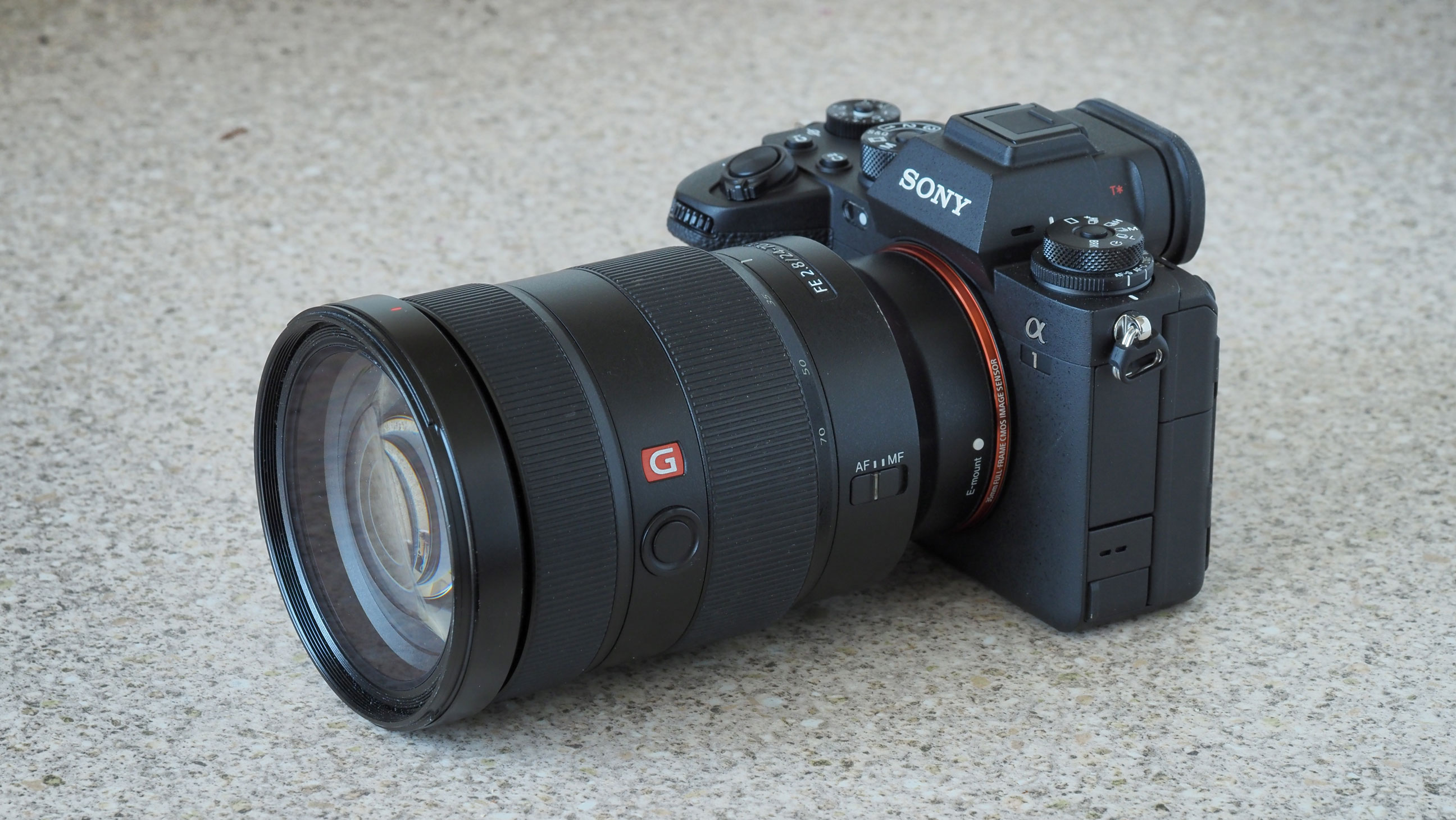
Specifications
Reasons to buy
Reasons to avoid
✅ You need raw power: With 50.1MP stills (199MP via pixel-shift) and 8K 30p video, this is a resolution monster.
✅ You want great glass: The E-mount is the market's most mature mirrorless mount, with bountiful lens options.
❌ You need the best IBIS: Sony's stabilization technology isn't the best, so shake compensation isn't as good as rivals'.
❌ You want a flippy screen: The A1 has a tilt-only screen, which limits flexibility for video and low/high-angle shooting.
🔎 Sony A1 The flagship Sony camera, the A1 combines power and speed – along with a phenomenal selection of native lens options, both first- and third-party. ★★★★½
Sony has four categories of Alpha cameras, each dedicated to different needs: in addition to the A7 series targeted at enthusiasts, the A7R is for resolution (with the Sony A7R V delivering 61MP), the A7S is for video and the A9 is for speed (the Sony A9 III achieving an incredible 120fps burst rate).
As the company's flagship camera, the Sony A1 attempts to tick all the boxes. And with its 50.1MP sensor, 8K video and 30fps bursts, I think it does an incredible job at offering all-round pro performance. (As you're probably aware, the Sony A1 II has now been released – but honestly, the differences are minor but the price difference is huge, so I recommend going for the original model as it's way better value.)
Not only does it have the richest resolution on this list, it also offers 199MP photos via the magic of pixel shift (though, like the Canon EOS R5, it requires everything to be completely still in order for the mode to work).
It also promises 30fps shooting at full 50.1MP resolution, though there are quite a few caveats in order to achieve this (from the lens you're using to the AF mode to the file type), and in real-world use I was generally getting 15-20fps. Still impressive, just not quite what was advertised.
Likewise, the promised 5.5 stops of in-body stabilization don't feel quite there to me. Sony has the weakest IBIS system, in my experience, and while you'll experience better performance than a completely unstabilized system, don't expect it to be on par with other manufacturers.
There are still plenty of positives, though – such as the 8K 30p and 4K 120p video, and the hybrid CFexpress A / SD card slots, enabling you to get mirrored memory card performance whichever format you're working with.
Sony also holds a distinct advantage over other mirrorless manufacturers in that the E-mount is the most well-established and widely supported on the market – giving you a rich range of native Sony glass, as well as bountiful options of more affordable and exotic third-party options.
Read our full Sony A1 review
| Lab results | Score | Rating |
|---|---|---|
| Resolution (ISO 200) | 39/60 | ★★★★★ |
| Dynamic range (ISO 200) | 10.41 EV | ★★★ |
| Noise (ISO 200) | 38.81 decibels | ★★★★ |
Best Nikon camera for professional photography

Specifications
Reasons to buy
Reasons to avoid
✅ You want to shoot 8K 60p: Aside from the R5 II, this is the only pro camera that shoots 8K up to 60p, not just 30p.
✅ You want a pro body: Unlike most modern cameras, the Z9 has a traditional pro form factor with vertical grip.
❌ You're worried about cost: The Nikon Z8 has virtually identical specs, but a much smaller price tag (and body).
❌ You want an articulated screen: The four-axis screen is better than a tilt-only, but not as good as a full flippy screen.
🔎 Nikon Z9 The best camera that Nikon makes. It edges the Z8 thanks to a few specs, and the pro body makes both shooting and handling lenses much easier. ★★★★½
Nikon's most capable camera ever, there's nothing the Z9 can't do. It offers 45.7MP stills, and it can rattle them off at up to 20fps in RAW or 30fps in JPEG. And, if you're happy with 11MP images, it can also machine-gun frames at an amazing 120fps – though it should be noted that the Sony A9 III takes full-resolution 24.1MP stills at 120fps.
What other cameras can't do, however, is give you 8K 60p video – and in fact, the Z9 is an incredible video performer all-round, offering 8- or 10-bit H.265, 10-bit Apple ProRes 4:2:2 HQ or 12-bit in-camera ProRes RAW HQ, 24-bit PCM audio, 4K 120p… and it boasts up to 2½ hours of 8K video, being largely immune to the recording constraints that hamstring its rivals.
The image stabilization is rock-solid, offering up to 6 stops of compensation with certain lenses, and it goes all-out with dual CFexpress B slots (rather than the split-formats offered by the likes of the R5) for unrestrained performance.
The integrated vertical grip is the main reason I've chosen the Z9 over the smaller, cheaper, but otherwise almost-identical Z8. In addition to the grip being far more practical for extended shooting in both horizontal and vertical orientation, it also offers better battery life – and on top of that, the larger body is also responsible for the better heat dissipation that delivers longer video recording times.
There are cameras that exceed it in specific departments, but as al all-round professional camera there is nothing else like the Z9.
Read my full Nikon Z9 review
| Lab results | Score | Rating |
|---|---|---|
| Resolution (ISO 200) | 38/60 | ★★★★ |
| Dynamic range (ISO 200) | 11.9 EV | ★★★★ |
| Noise (ISO 200) | 36.12 decibels | ★★★★ |
Black Friday deal guides
If you're looking for more specific recommendations on the best deals available during Black Friday, check out the following guides:
Best Black Friday Camera deals
Canon Black Friday deals
Nikon Black Friday deals
Sony Black Friday deals
Black Friday Instax deals
Black Friday GoPro deals
Black Friday drone deals best
Black Friday telescope deals
Black Friday binocular deals
FAQs
What camera do most professionals use?
Pros have been the last to abandon DSLRs in favor of mirrorless cameras, so workhorses like the Canon EOS-1D X Mark III, Canon EOS 5D Mark IV, Nikon D850 and Nikon D6 can still be seen in professional environments. However, those days are definitely dwindling.
These days the most common cameras you see at everything from sporting events to weddings to safaris are mirrorless models – biased mainly towards Canon and Sony. In addition to the cameras on this list, you'll routinely see cameras like the Canon EOS R3, Sony A9 II and Sony A9 III in the hands of news, sports and wildlife photographers.
How many megapixels do professional photographers use?
It depends on the photographer, and on the profession. Fine art photographers, archival photographers, and many commercial photographers deliver their work in the highest quality and resolution possible. This generally takes the form of medium format cameras, such as the 151MP Phase One XF IQ4, or the 100MP Fujifilm GFX 100 II and Hasselblad X2D 100C.
For sports photographers, the sweet spot is in the mid-20MP range. This enables them to shoot at ridiculously high speeds (such as 120fps on the Sony A9 III) without ending up with a mountain of unmanageable file sizes.
Landscape and portrait photographers increasingly lean towards the 45MP options from Canon and Nikon, though the 60MP models like the Sony A7R V offer even more resolution.
However, there is more to a professional camera than mere megapixels – and you can't judge a camera, or a photographer, by the amount of pixels in the photographs they take.
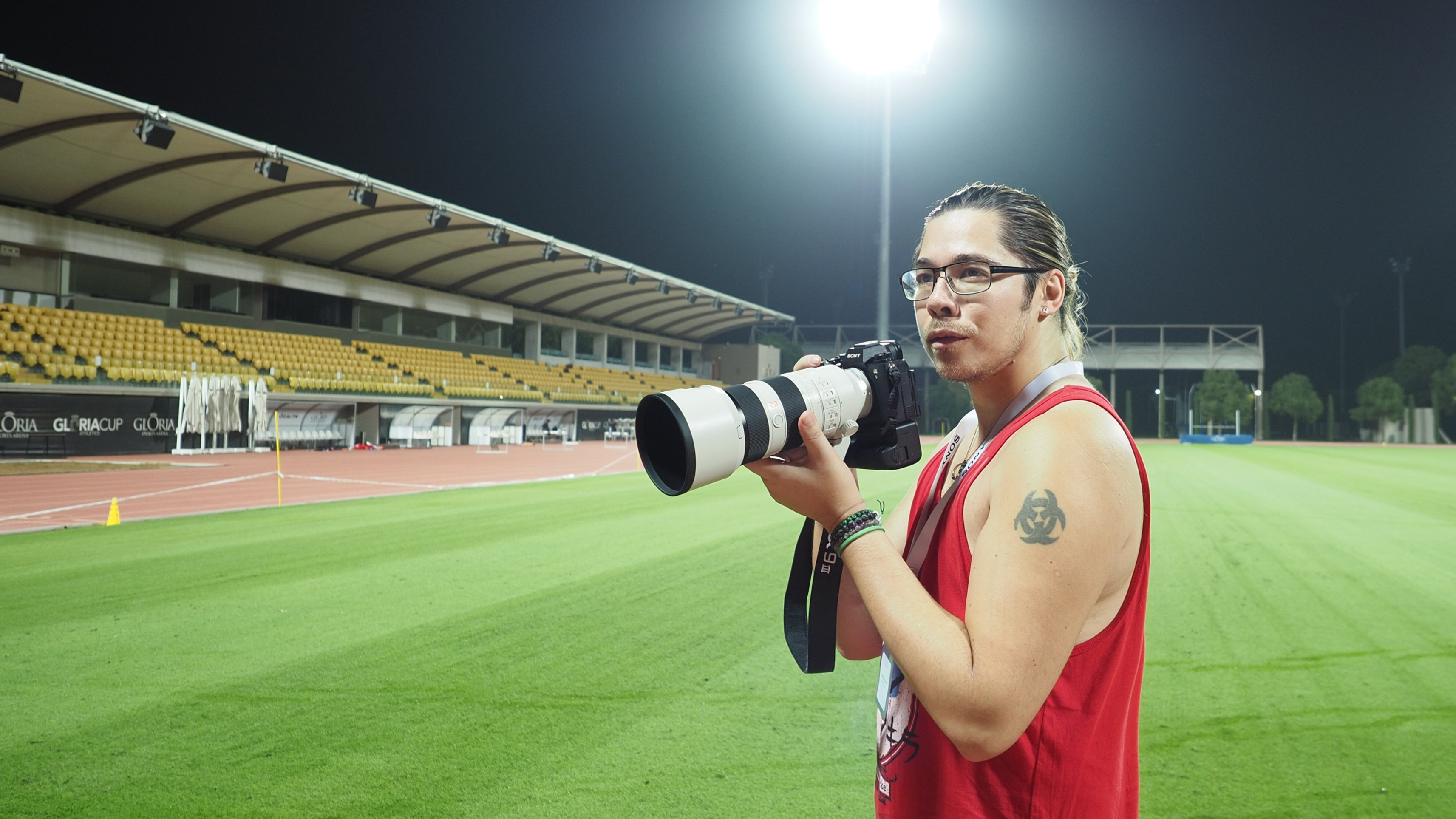
How to choose a professional camera
Picking the best professional camera is not just about picking the one with the best or most enticing specifications. You have to look at the system as a whole, its lenses, its other models, and what is set to be released in the future. Before making a choice, it's worth asking yourself a series of questions:
1) Are you switching from a different system? If this is the case, it's well worth looking into whether there's any potential for compatibility between your existing and new system (i.e. using lens mount adapters). ‘Migrating’ an existing system is much simpler and cheaper than starting again with a whole new setup.
2) What lenses will you need? Think about the kind of work you need and the lenses you need for it, and check whether the system you're considering can meet those needs. Lens guides can be useful here, such as our guides to the best Canon lenses or the best Nikon lenses.
3) DSLR or mirrorless? While it does sometimes feel like mirrorless is taking over the world, the best DSLR cameras do still have their advantages and some, like the Canon EOS-1D X Mark III, are breaking new ground. Read our guide to DSLR vs mirrorless cameras if you're still not sure.
4) Video vs stills? Are you shooting videos as well as stills? While both DSLRs and mirrorless cameras can and do produce excellent video, mirrorless currently has the edge here, so if the video is part of your portfolio then it's worth factoring this into consideration.
How we test cameras
I test every camera by using it in real-world shooting situations – often on professional jobs and paid commissions. When I evaluate a professional camera, I'm much stricter than I am with entry-level or intermediate models; pro cameras have to get the job done, and they have to do it quickly and to the highest standard.
I torture test autofocus, push low light capabilities to their limits, fire frames until every last drop of charge is gone from the battery… I need to know that a professional camera won't let me down. That extends to things like general operability, ergonomics and handling, flexibility of files in post-production – every aspect of using a camera, from charging the battery before shooting to transferring the last file from a memory car afterwards.
One my hands-on testing is complete, I pass the camera to our lab manager Ben Andrews to undergo a slew of dedicated lab tests. He evaluates camera resolution, dynamic range, and noise under scientifically controlled conditions using two key testing tools: Imatest Master and DxO Analyzer. All DSLRs and mirrorless cameras are subjected to these tests:
1. Resolution (ISO-12233): We use a resolution chart based on ISO-12233 from Applied Image inc to indicate the limit of the camera’s vertical resolution at the centre of the frame. The higher the value, the better the detail resolution.
2. Dynamic range (DxO Analyzer): This is a measure of a camera’s ability to capture detail in the highlights and shadows. We use DxO’s transmissive chart, which enables us to test a dynamic range of 13.3 stops.
3. Noise (DxO Analyzer): We use the dynamic range transmissive chart to analyze the signal-to-noise ratio for RAW and JPG files at every sensitivity setting using DxO Analyzer. A higher value means the signal is cleaner.
Get the Digital Camera World Newsletter
The best camera deals, reviews, product advice, and unmissable photography news, direct to your inbox!

James has 22 years experience as a journalist, serving as editor of Digital Camera World for 6 of them. He started working in the photography industry in 2014, product testing and shooting ad campaigns for Olympus, as well as clients like Aston Martin Racing, Elinchrom and L'Oréal. An Olympus / OM System, Canon and Hasselblad shooter, he has a wealth of knowledge on cameras of all makes – and he loves instant cameras, too.
